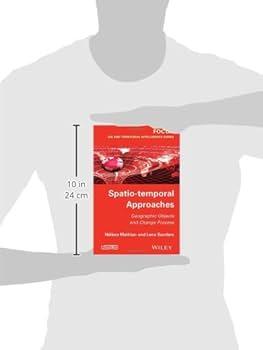In an era defined by rapid innovation and interconnected economies, the dynamics of value creation and technology transfer are more complex and vital than ever. China, as a global powerhouse of technological advancement, offers a unique landscape where geographic proximity and temporal evolution intertwine to shape the flow of knowledge and innovation. This article delves into the emergent field of spatio-temporal geographic networks, harnessing rich patent data to unravel how collaborative value co-creation and technology dissemination unfold within China’s diverse regional contexts. By mapping these intricate relationships over time and space, we gain fresh insights into the mechanisms driving innovation ecosystems, illuminating pathways for more effective policy-making and strategic collaboration in the pursuit of sustainable technological growth.
Integrating Spatio-Temporal Analytics to Map Innovation Flows in China
Combining spatial and temporal dimensions allows us to unravel the complex patterns of innovation diffusion across China’s vast and diverse landscape. By leveraging patent data as a proxy for inventive activity, these analytics illuminate clusters of technological breakthroughs and their migration over time. This dynamic mapping reveals not only the hotspots of innovation but also the pathways through which knowledge flows between cities and provinces, highlighting corridors of collaboration and technology transfer that traditional analyses might overlook.
Key insights include:
- Emergence of innovation hubs: Rapid growth in patent activity around metropolitan areas such as Shenzhen, Beijing, and Shanghai.
- Interconnected clusters: Networks of co-inventors bridging academic institutions, startups, and established corporations, creating fertile grounds for value co-creation.
- Temporal shifts: Changes in dominant technology sectors across different time periods, reflecting evolving national priorities and market demands.
| Time Period | Dominant Tech Sector | Leading Region | Patent Growth Rate |
|---|---|---|---|
| 2000-2005 | Biotechnology | Beijing | 12% |
| 2006-2012 | Information Technology | Shenzhen | 18% |
| 2013-2020 | Renewable Energy | Jiangsu | 22% |
Unlocking Value Co-Creation through Dynamic Geographic Network Structures
Harnessing the intricate web of geographic interactions reveals how value co-creation unfolds dynamically across regions in China. By mapping patent data onto evolving spatio-temporal networks, we uncover the latent relationships between innovation hubs and peripheral players. This network-centric lens allows stakeholders to identify critical nodes where knowledge transfer flourishes, fostering collaborative environments that accelerate technology diffusion. Such an approach transcends traditional static models, highlighting how geographical proximity, coupled with the timing of innovation activities, orchestrates synergistic collaborations that enhance economic and technological growth.
Key factors driving these dynamic structures include:
- Inter-regional connectivity: The strength and frequency of interactions between cities directly influence innovation spillovers.
- Temporal shifts: Emerging hotspots evolve as new technological fields gain momentum, reshaping the network landscape.
- Cross-sector collaborations: Integration of diverse industries amplifies value creation potential through multidisciplinary knowledge exchange.
| Region | Innovation Index | Collaboration Intensity | Patent Transfer Rate (%) | |||||||
|---|---|---|---|---|---|---|---|---|---|---|
| Beijing | 89 | High | 34.5 | |||||||
| Shanghai | 83 | Strategic Recommendations for Enhancing Technology Transfer Using Patent Data Insights
Leveraging patent data effectively requires a nuanced approach that capitalizes on both spatial and temporal dimensions of innovation ecosystems. By dissecting patent filings across diverse regions and over time, stakeholders can identify emerging hotspots of technological activity and underserved areas ripe for collaboration. This temporal layering uncovers innovation trajectories, enabling organizations to strategically position themselves within dynamic networks. Emphasizing cross-regional partnerships and interdisciplinary knowledge exchange fosters a fertile ground for value co-creation, ensuring that technology transfer initiatives are not only timely but also contextually relevant to local industry needs. To operationalize these insights, institutions should prioritize the development of integrated platforms that visualize patent flows alongside geographic data, enriching decision-making processes. Key strategic actions include:
Future OutlookIn unraveling the intricate web of spatio-temporal geographic networks through the lens of patent data, this exploration sheds light on the dynamic processes underpinning value co-creation and technology transfer in China. By mapping innovation’s pulse across regions and time, it reveals not only the patterns of collaboration but also the evolving landscapes where knowledge and opportunity converge. As China continues to carve its path in the global technological arena, understanding these networks offers a vital compass for policymakers, researchers, and industry leaders seeking to foster more connected, resilient, and innovative ecosystems. Ultimately, the synergy of place and time captured here invites us to rethink how geographic and temporal dimensions shape the future of innovation and collective progress. |































